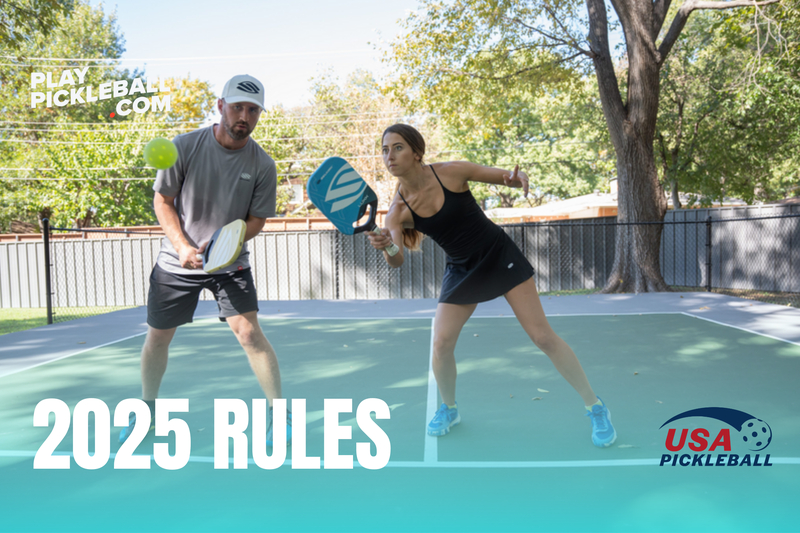Pickleball is a paddle sport played using a special perforated ball on a 20-foot-by-44-foot court with a tennis-type net. The court is divided into right/even and left/odd service courts and non-volley zones.
The ball is served diagonally across the net to the opponent’s receiving court using an approved motion. The ball is struck back and forth across the net until a player fails to return the ball in accordance with the rules.
Points are scored only by the serving side when the server or the server’s team wins the rally, or the opposing side commits a fault. The server continues to serve, alternating service courts, until the serving side loses the rally or commits a fault. For matches that use the provisional rally scoring option, a point is scored by the player or team that wins each rally except game point can only be scored when serving.
Typically, the first side scoring 11 points and leading by at least a 2-point margin wins.
Pickleball can be played as singles or doubles.
The Players.
Pickleball is a game that requires cooperation and courtesy. A sense of fair play by giving the opponent the benefit of any doubt is essential in maintaining the game’s underlying principles of fun and competition. To that end:
- All points played are treated the same regardless of their importance; the first point of the match is as important as match point.
- Either partner in doubles can make calls, especially line calls; there is no place in the game for one partner telling another, “That was my call, not yours.”
- Prompt calls eliminate the ‘two chance option.’ For example, a player cannot claim a hinder from a ball rolling on the court after they hit a ball ‘out;’ they gave up their ability to call the hinder by choosing instead to hit the ball.
- Players strive to cooperate when confronted with a situation not covered by the Rulebook. Possible outcomes can be a replay, allowing the rally to stand, or in extreme cases, asking for a referee to resolve a dispute.
- Where possible, rules accommodate players with various adaptive needs.Players avoid wearing clothing that closely matches the ball color.
- Players should not question or comment on an opponent’s call.
Unique Features.
Two-Bounce Rule. After the ball is served, each side must make one groundstroke prior to volleying the ball.
Non-Volley Zone (NVZ). An area that extends 7 feet from the net on each side, within which a player is not allowed to strike the ball without it first bouncing. More specifically, the whole court from net to baseline is the same and can be freely used for all play with one exception: volleying. The first seven feet, the non-volley zone, cannot be used for volleying.
- (Wheelchair) Players using wheelchairs may allow the ball to bounce twice before returning the ball. The second bounce can be anywhere on the playing surface, which includes the area surrounding the court.

